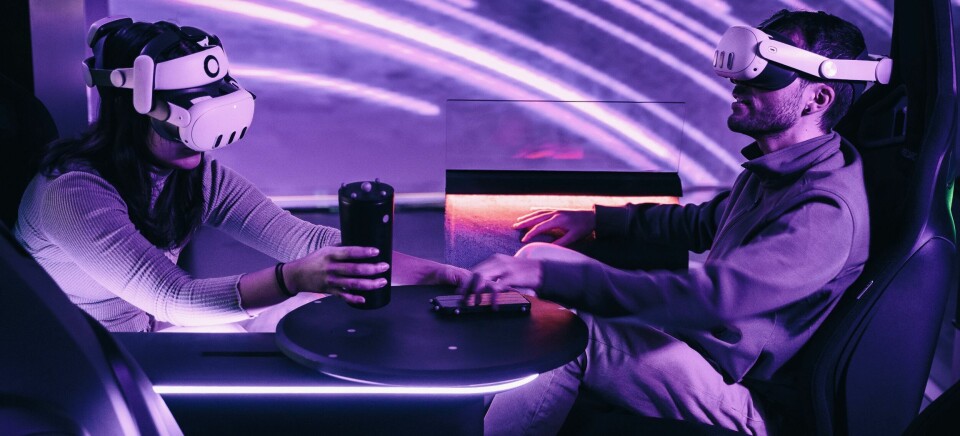
The world is getting phygital, and so is car design
PARTNER CONTENT
This content was paid for by Granstudio and produced in partnership with Car Design News
With a phygital approach to design, Granstudio’s transdisciplinary creative team ensure that context and individual needs are at the heart of every project
The way we interact with our world has become a mixture of physical and digital. From smartphones to supermarket self-checkouts and even your coffee machine at home, digital touchpoints have become central to countless day-to-day situations. The car is no exception, so it is only natural this would influence how it is designed.
Granstudio has become a pioneer in ‘phygital’ design which blends real-world, hands-on processes with cutting-edge extended reality (XR) technologies. Phygital processes have flipped the script on how designers work, allowing them to step inside their sketch or render not only in a virtual environment, but physically.
Before, a designer might sit behind a screen or a piece of paper trying to imagine how their creation would feel to use. Now, they can immerse themselves in their creative work and place it in the context of the user. “It’s the best way to understand how that design will eventually be experienced,” explains Granstudio founder Lowie Vermeersch.
It comes at a time where there is a dramatic shift on the horizon. Autonomous driving unlocks a world of freedom inside the cabin, and while this future is not yet mainstream, it is easy to see how the car is starting to become a genuine living space.
In the past, interior design was largely secondary to the exterior, but to optimise the cabin for a radically different driving experience, designers are also now working inside-out. This is where a phygital way of working pays its dividends, allowing teams to step inside the vehicle before the exterior has even taken shape and explore new arrangements and interactions from the get-go.
“To me, it doesn’t make much sense to just sit in a clay buck and guess how the interior will make me feel. It’s about experiencing and interacting with the sum of all these physical and digital elements, not just looking at the shapes in front of you,” says Vermeersch.
“Working inside-out with a phygital environment allows you to do that. You also become very aware of the beauty of having transparency in certain places, for example, and you start to reconsider the current canons of the beltline and DLO. You view the exterior through the lens of how it feels on the inside – shaping the user experience in the truest sense.”
The ability to rapidly prototype complete experiences brings other shifts too, encouraging creative teams to design with materials first, rather than cladding a sculpture afterwards with whatever works. Again, this is a natural evolution as vehicle interiors become more of a genuine living space and innovative new materials solutions become available.
“Just like the digital user experience, we believe that designing with materials early on can help you make more strategic, meaningful decisions,” says Vermeersch. “Just like a painter has a palette of colours, the designer’s palette has shape, material, digital interactions, sound and many more elements. Rather than working in a serial way – starting with shape first – you can treat those parts of the palette more equally and discover new solutions.”
Working with phygital tools allows designers to trial all this in a very real way, combining VR with material samples to evaluate the tactility of the material within the context of the overall design. This might prove particularly useful in the world of ‘Shy Tech’ where digital functions are hidden until needed.
“In order to explore the potential of Shy Tech, you need to be able to design it in the context of the whole interior,” notes Vermeersch. “It’s important that we don’t exclude these new opportunities by working with an old process that’s based on old opportunities.”
At the heart of this all is a keener focus on user-centric design. Of course, products as complex as a car are always developed with the user in mind, but aesthetics and performance have always ranked a little higher in the list of priorities. With autonomous driving and an increasingly digital cockpit, the user experience has surged in importance. Now, says Vermeersch, designers are more conscious of the evolving relationship between human and machine alongside styling and performance.
“How you consider the user has changed massively, and designers need to place them at the centre of their creative thinking,” explains Vermeersch. “Rather than a sculpture, you are designing an enabler for different behaviours. You are not prescribing what users can do in the car; you are creating possibilities for the user to find themselves in the product.”
All these trends may feel separate, but they are in fact interconnected and a phygital approach can help to address them as a whole. A pioneer of this phygital transformation, Granstudio sees itself as a supporting partner and is ready to help other creative teams to unlock their potential.



















